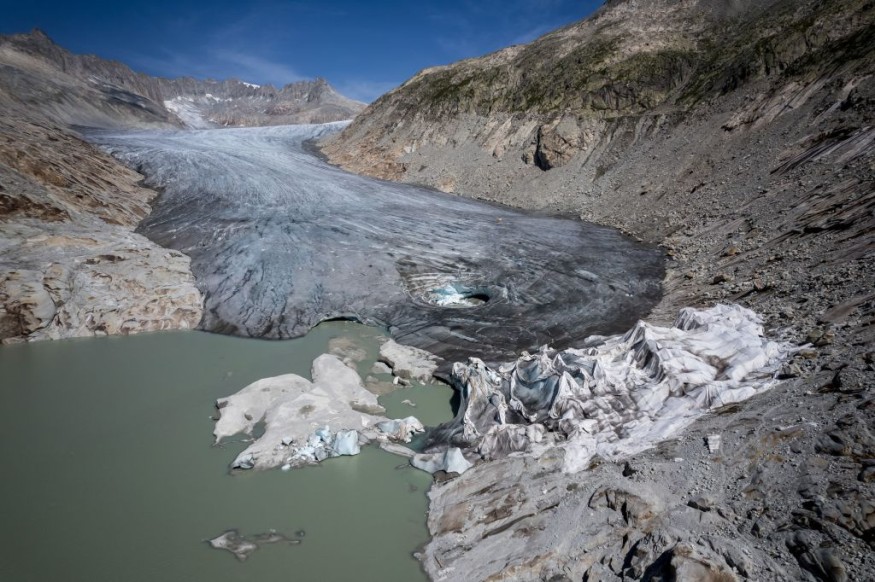
Global warming has caused widespread surface lowering of mountain glaciers, revealing that they are no longer appropriate for a climate archive.
As part of the Ice Memory initiative, Paul Scherrer Institute (PSI) researchers analyzed ice cores drilled in 2018 and 2020 from the Corbassière glacier at Grand Combin in the canton of Valais, along with colleagues from the University of Fribourg and Ca' Foscari University of Venice, as well as the Italian National Research Council's Institute of Polar Sciences (CNR).
Melting Glaciers
A comparison of the two sets of ice cores, published in Nature Geoscience, reveals that global warming has made at least this glacier unsuitable as a climate record.
Within two years, melting obliterated the soluble impurity records. The glacier has now been irreversibly destroyed as an archive for recreating important atmospheric aerosol components.
The Corbassière glacier in the Grand Combin massif no longer provides reliable information on historical climate and air pollution, as alpine glacier melting is occurring faster than previously thought.
Researchers led by Margit Schwikowski, head of PSI's Laboratory for Environmental Chemistry, and Carla Huber, a Ph.D. student and first author of the paper, came to this gloomy conclusion after comparing the signs of particulate matter locked in the annual layers of ice.
Glaciers are helpful in climate studies. The ice preserves historical climatic conditions and air components. As a result, they can be used as a "climate archive" for research, much like tree rings and ocean sediments.
Between 2018 and 2020, glacier melting must have been so intense that an unusually significant amount of water from the surface permeated the glacier and carried the trace substances it contained to the depths.
"But apparently the water there did not freeze again, concentrating the trace substances but instead it drained off and literally washed them away," the study says.
Race Against Time
The Grand Combin example demonstrates that glacier melting is occurring at a faster rate than researchers had anticipated.
So far, the researchers have looked at the distribution of oxygen isotopes in the ice, which can indicate temperature changes, as well as ionic trace chemicals like ammonium, nitrate, and sulfate. Next, they want to see how the signatures of organic molecules in the ice are changed.
It is believed that this will also apply to other glaciers across the world that have yet to be sampled.
Aside from the Col du Dôme glacier on Mont Blanc at 4,250 meters, where the project team first drilled in 2016, the Alps have only Colle Gnifetti on the Italian-Swiss border, which is even higher at 4,450 meters and thus colder than the Grand Combin. The PSI team, working with Ice Memory Foundation partners, was able to get an ice core with the signature intact the next year.
Cores from Illimani in the Bolivian Andes, Belukha in the Russian Altai, and Elbrus in the Caucasus have all been secured.
Last year, there were additional excursions to Spitsbergen and the Col del Lys in Italy, but their results are still awaited.
A trip to Kilimanjaro, Africa's only substantial ice body, failed last year due to political and administrative obstacles.
The project is a race against time. It is in no way guaranteed to succeed.
Related Article : Landslides Can Influence Glacier Melting and Glacier Movement: New Study
© 2025 NatureWorldNews.com All rights reserved. Do not reproduce without permission.





